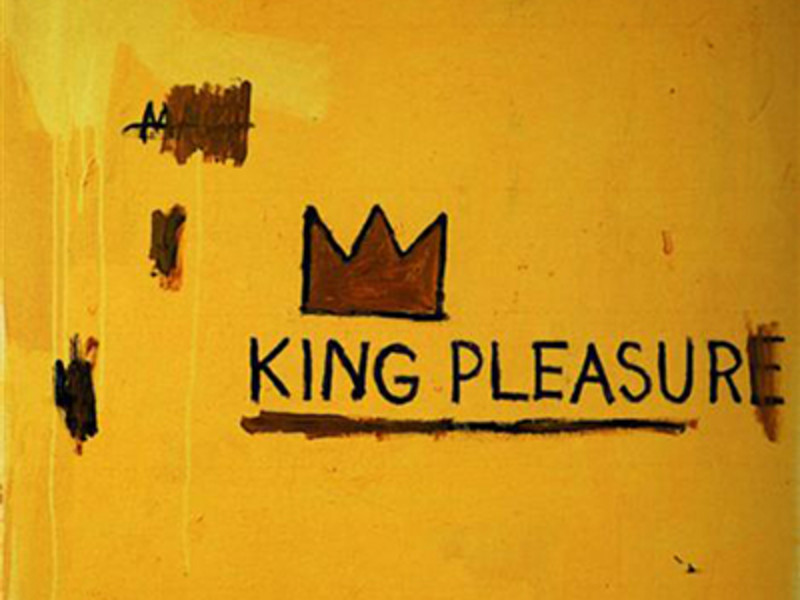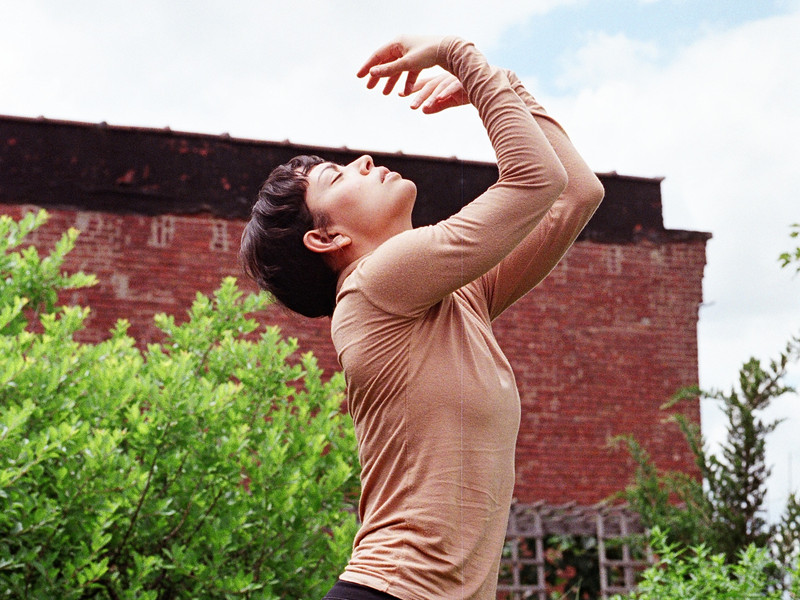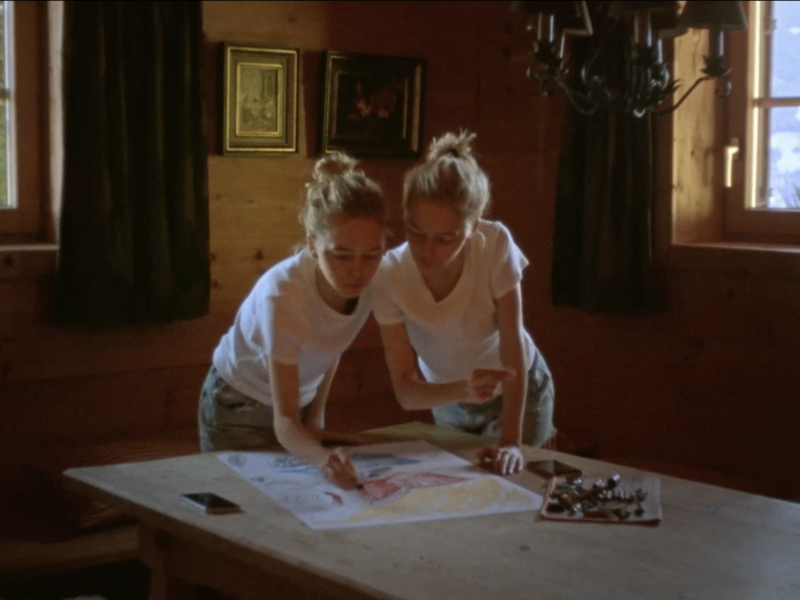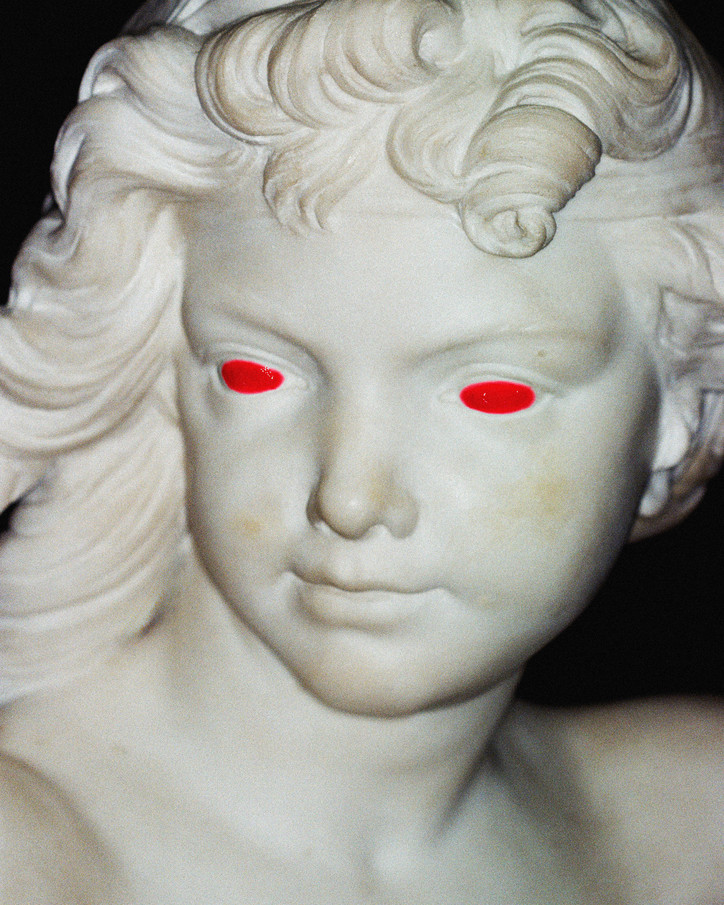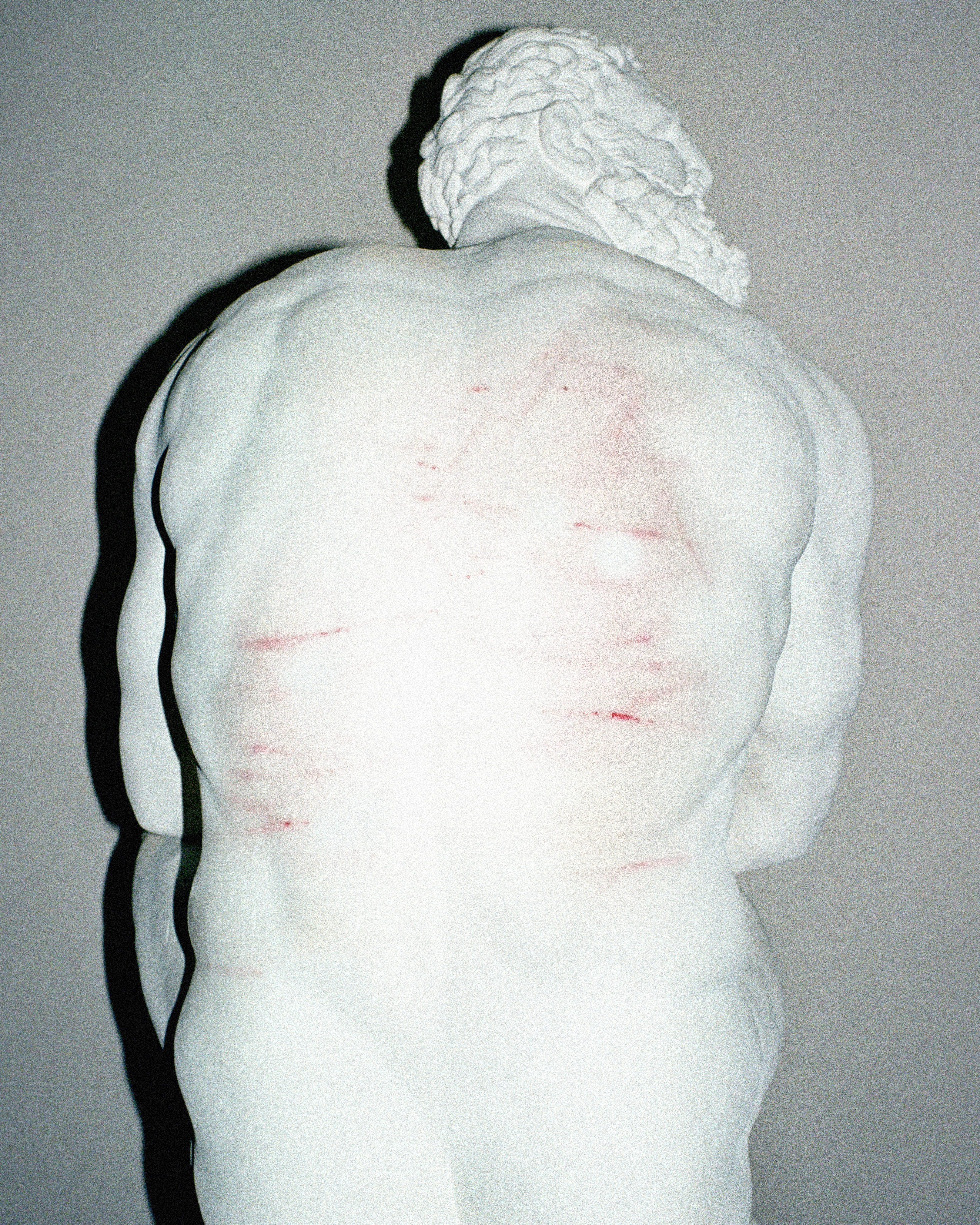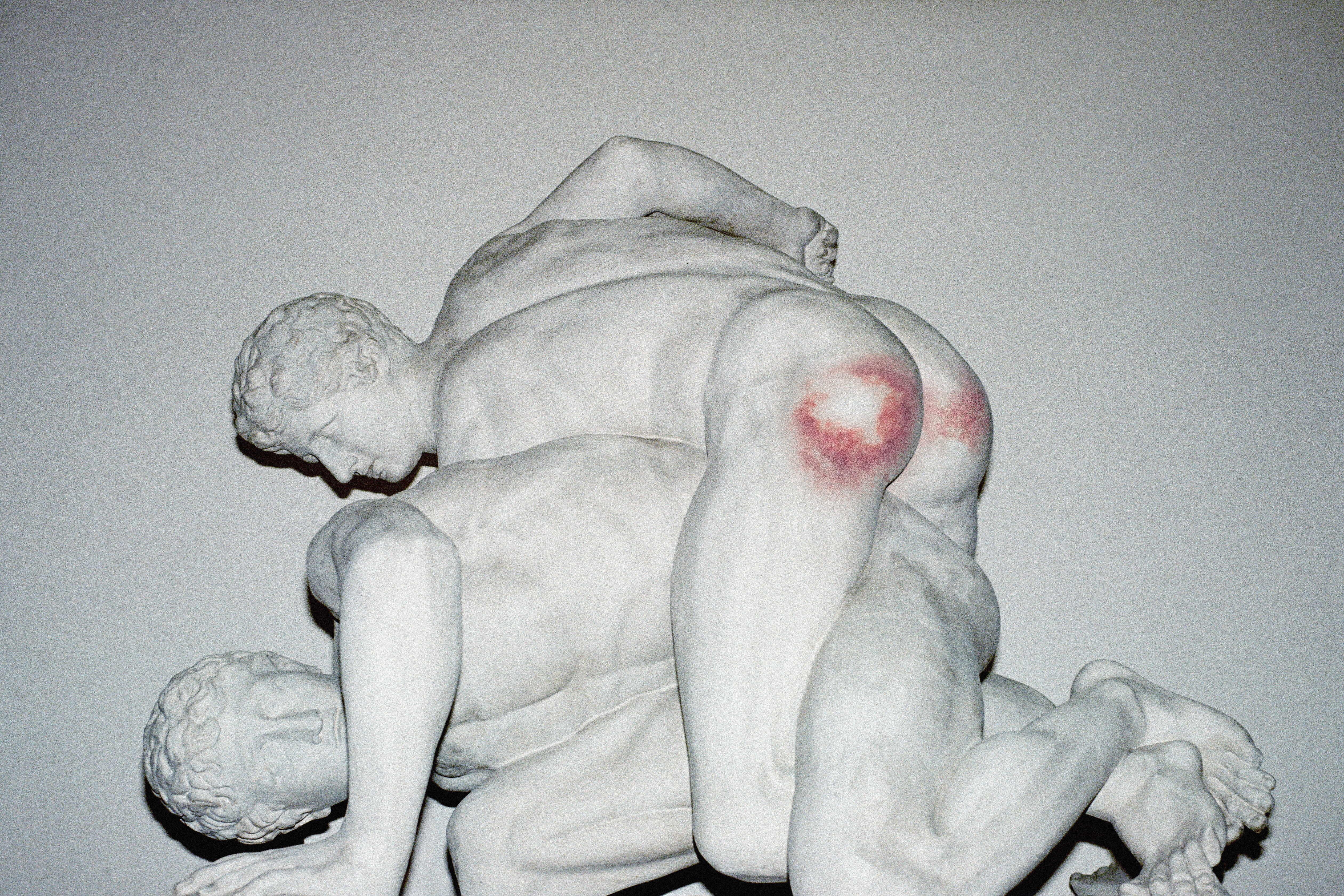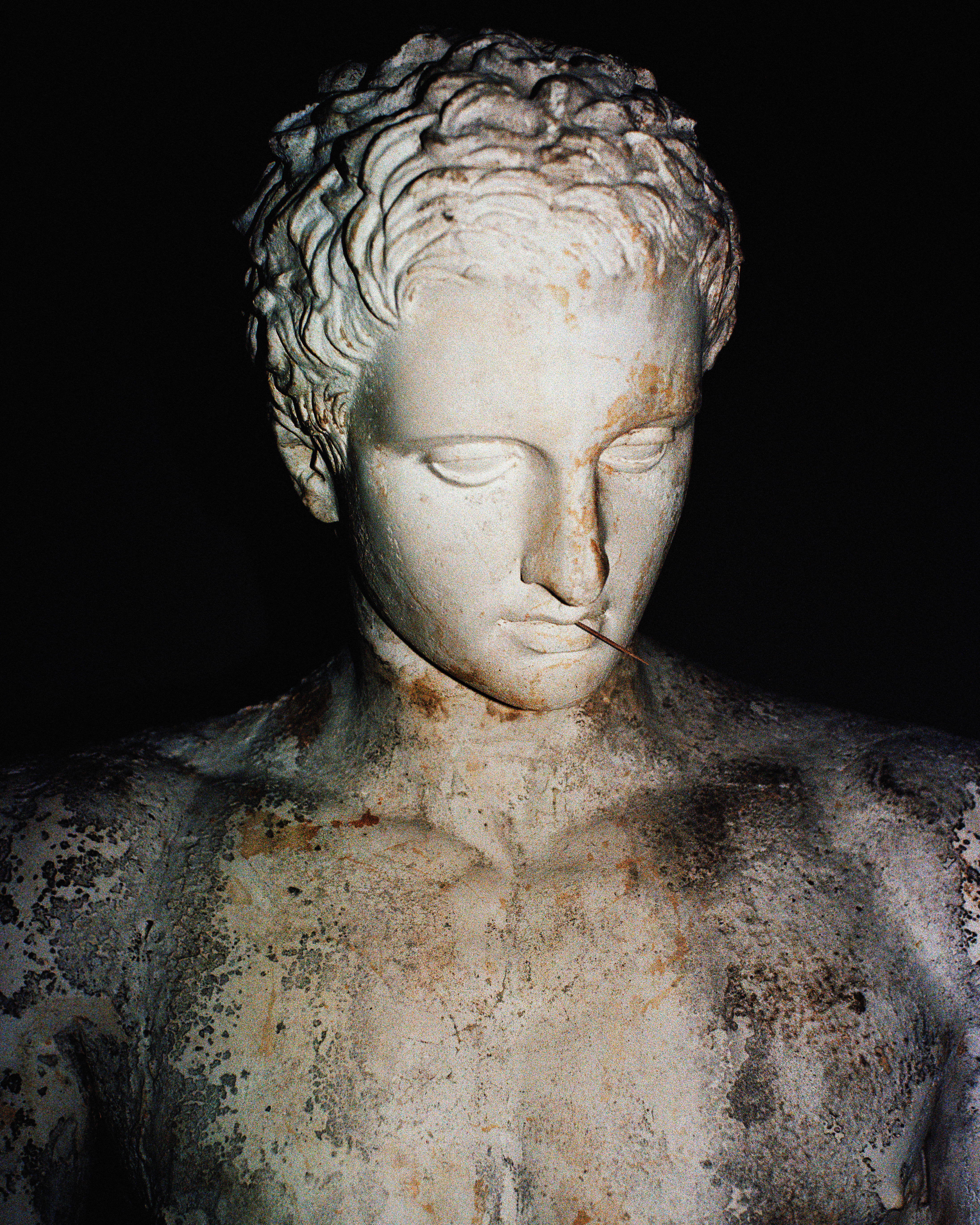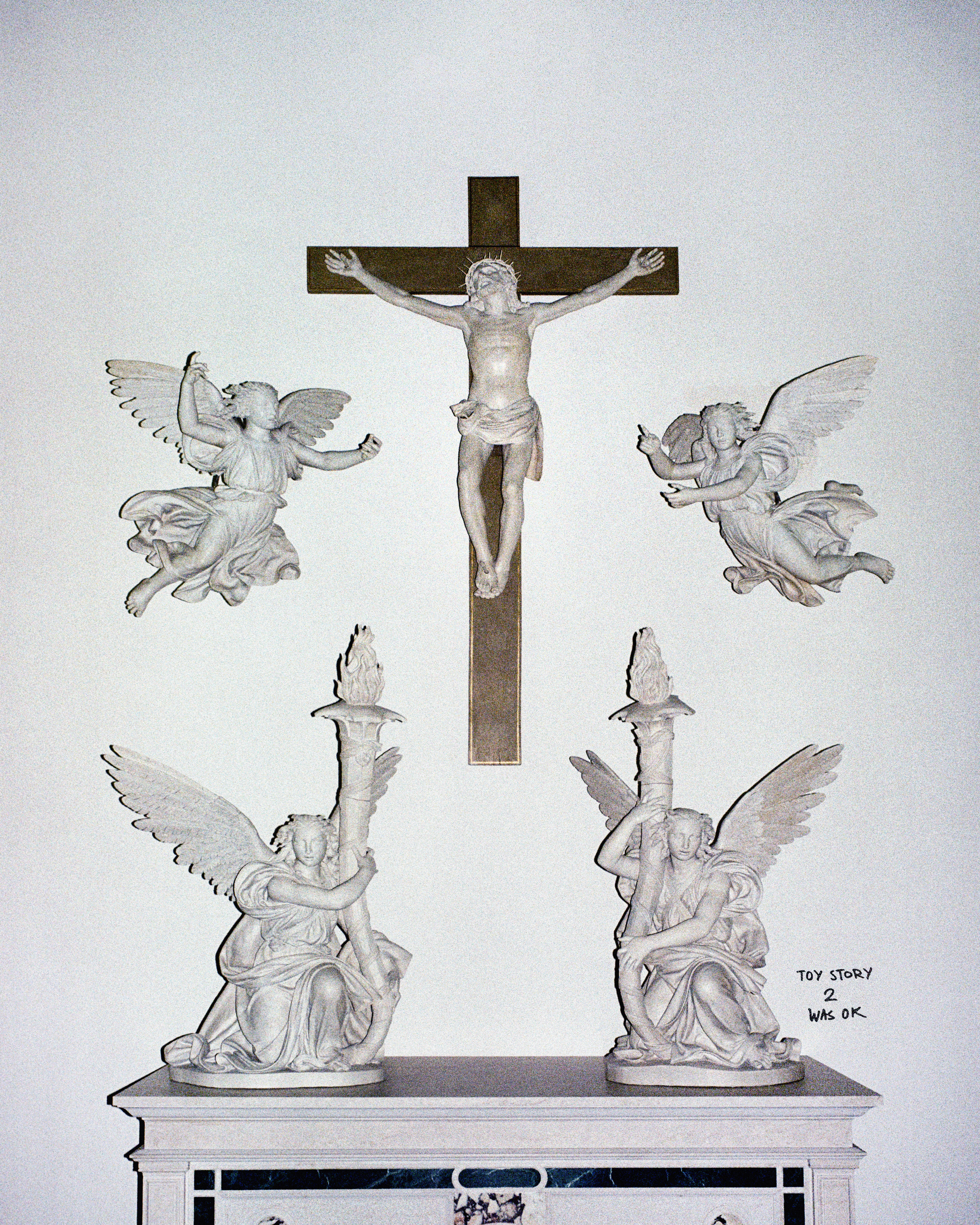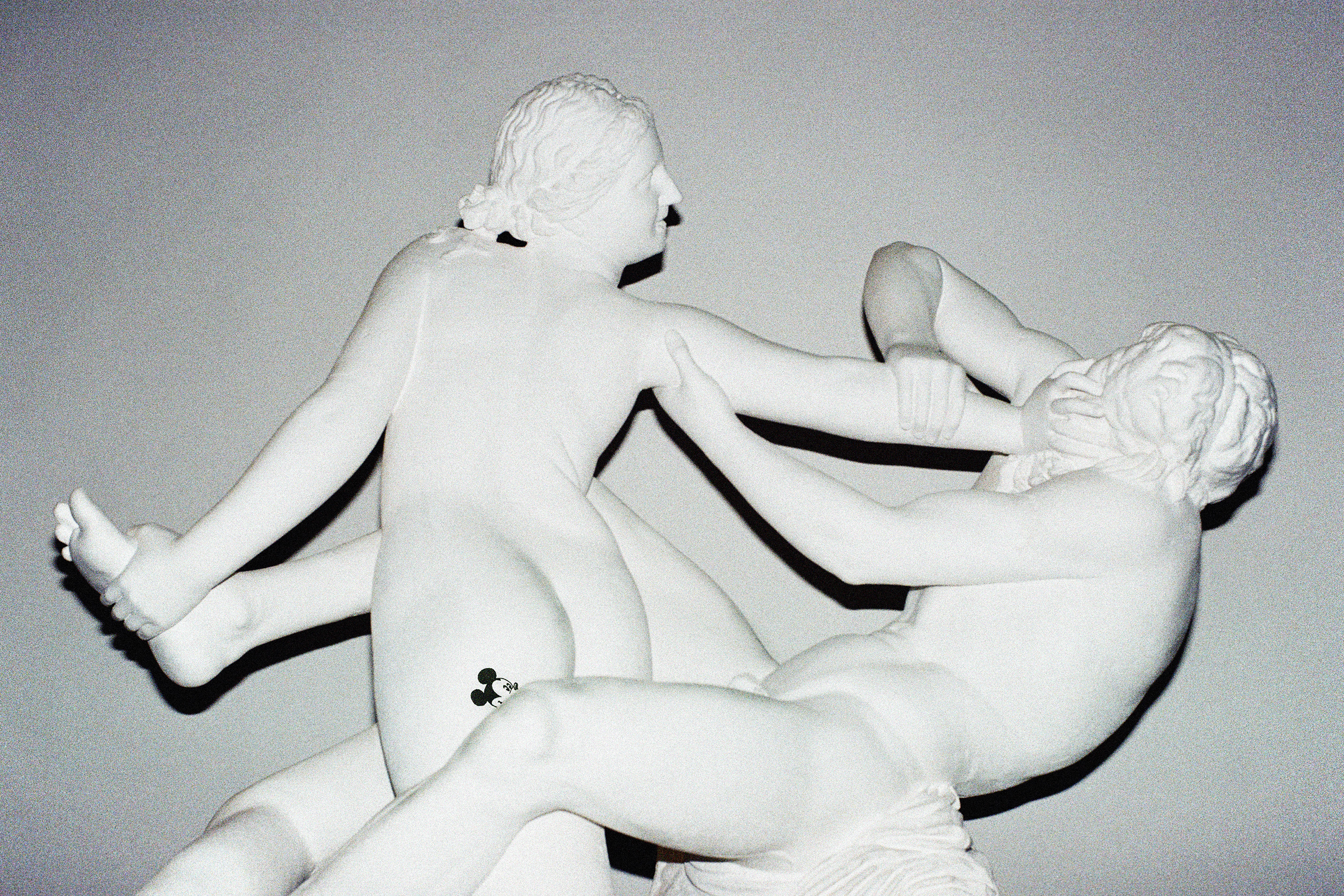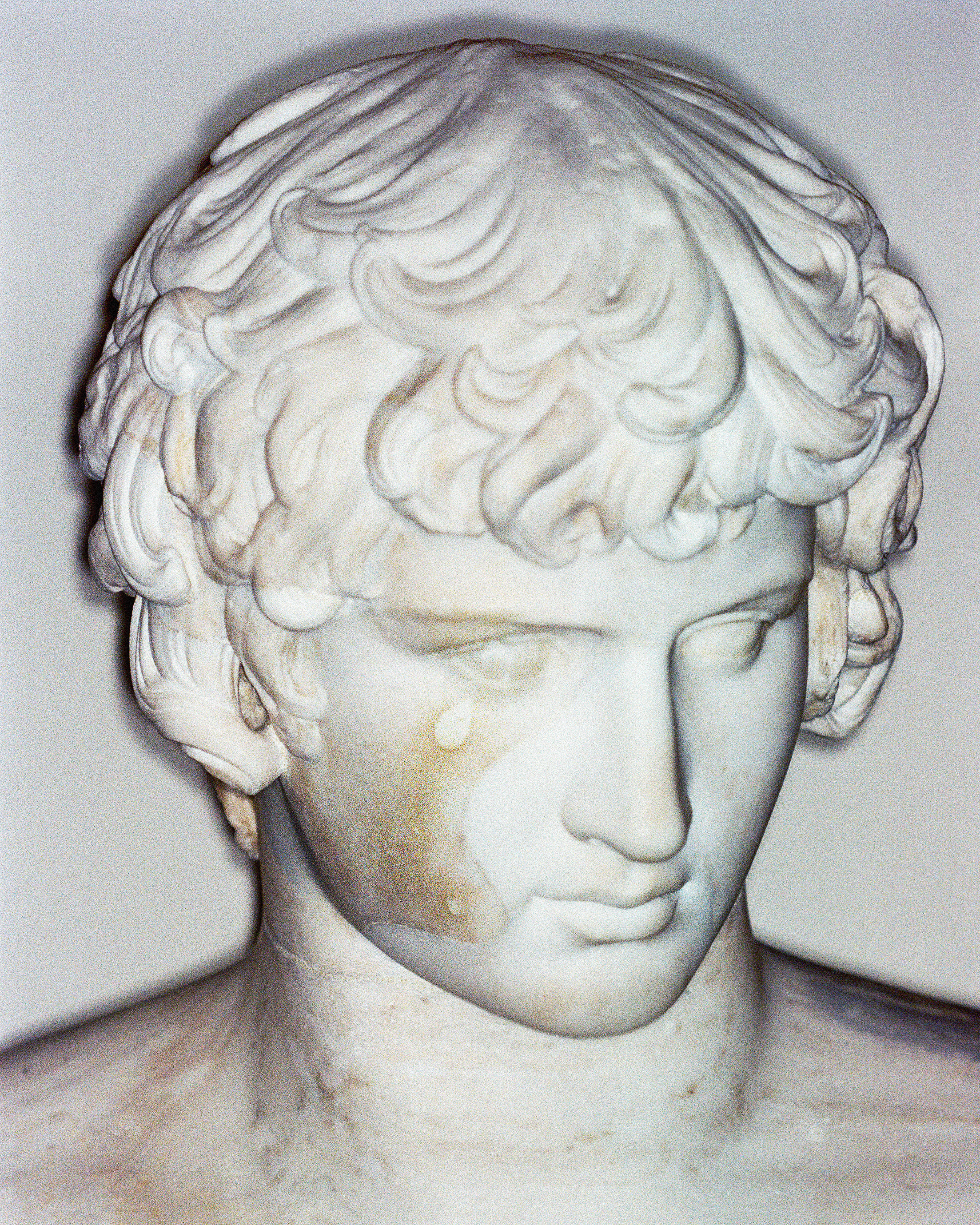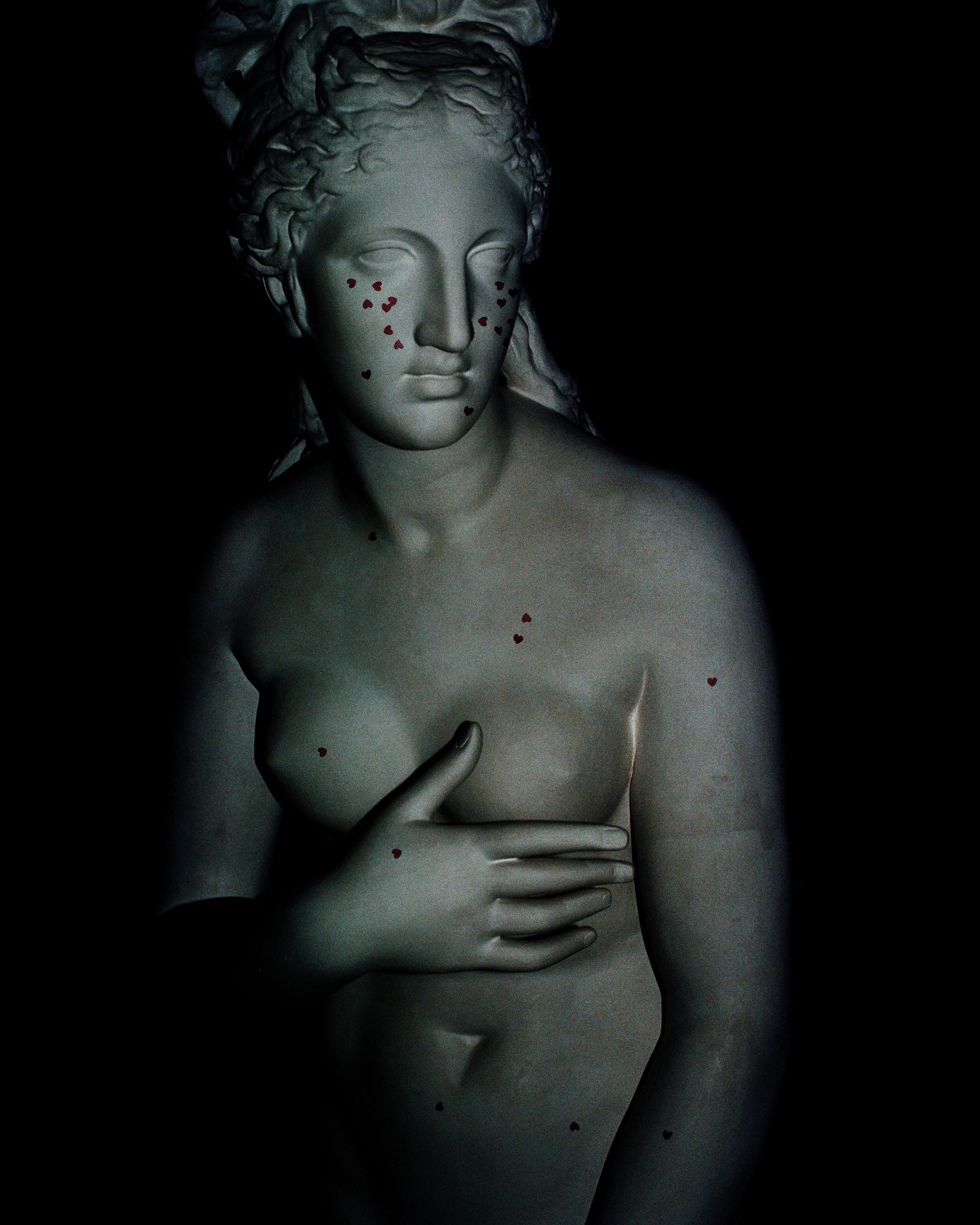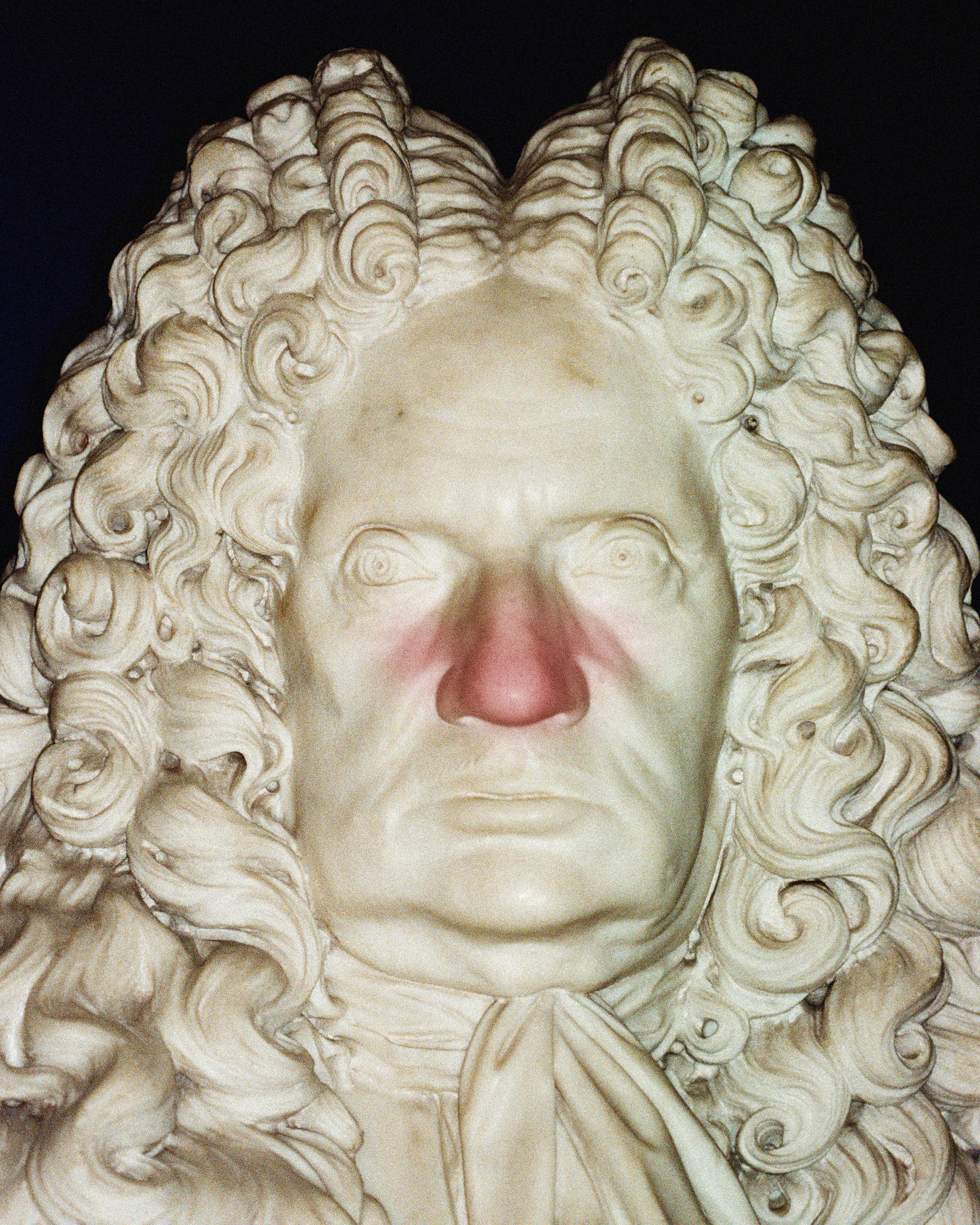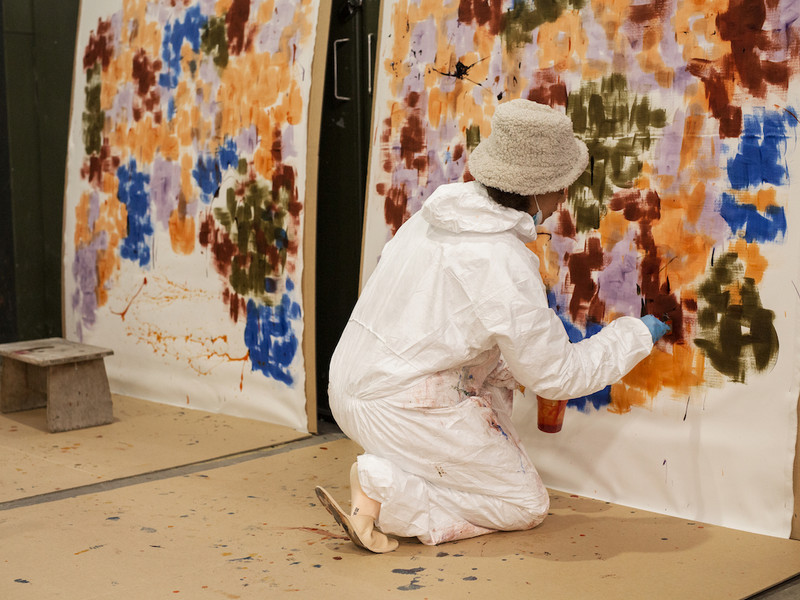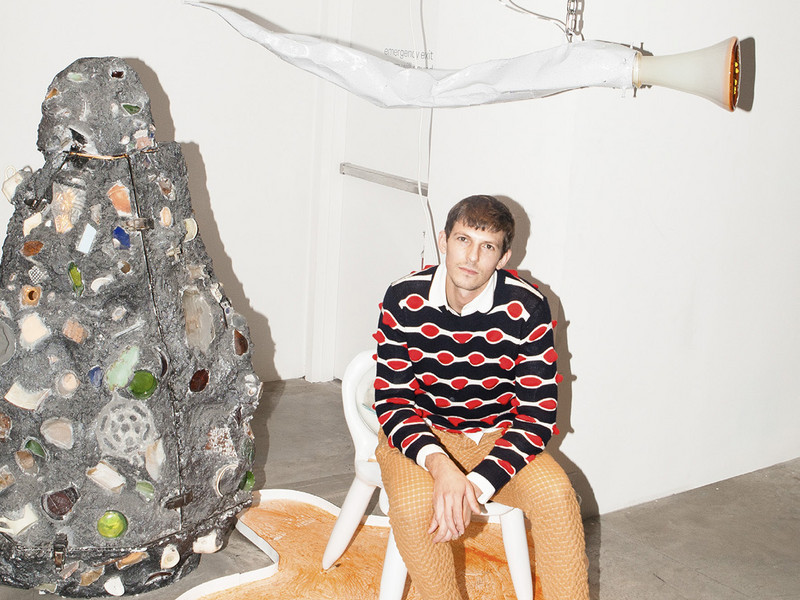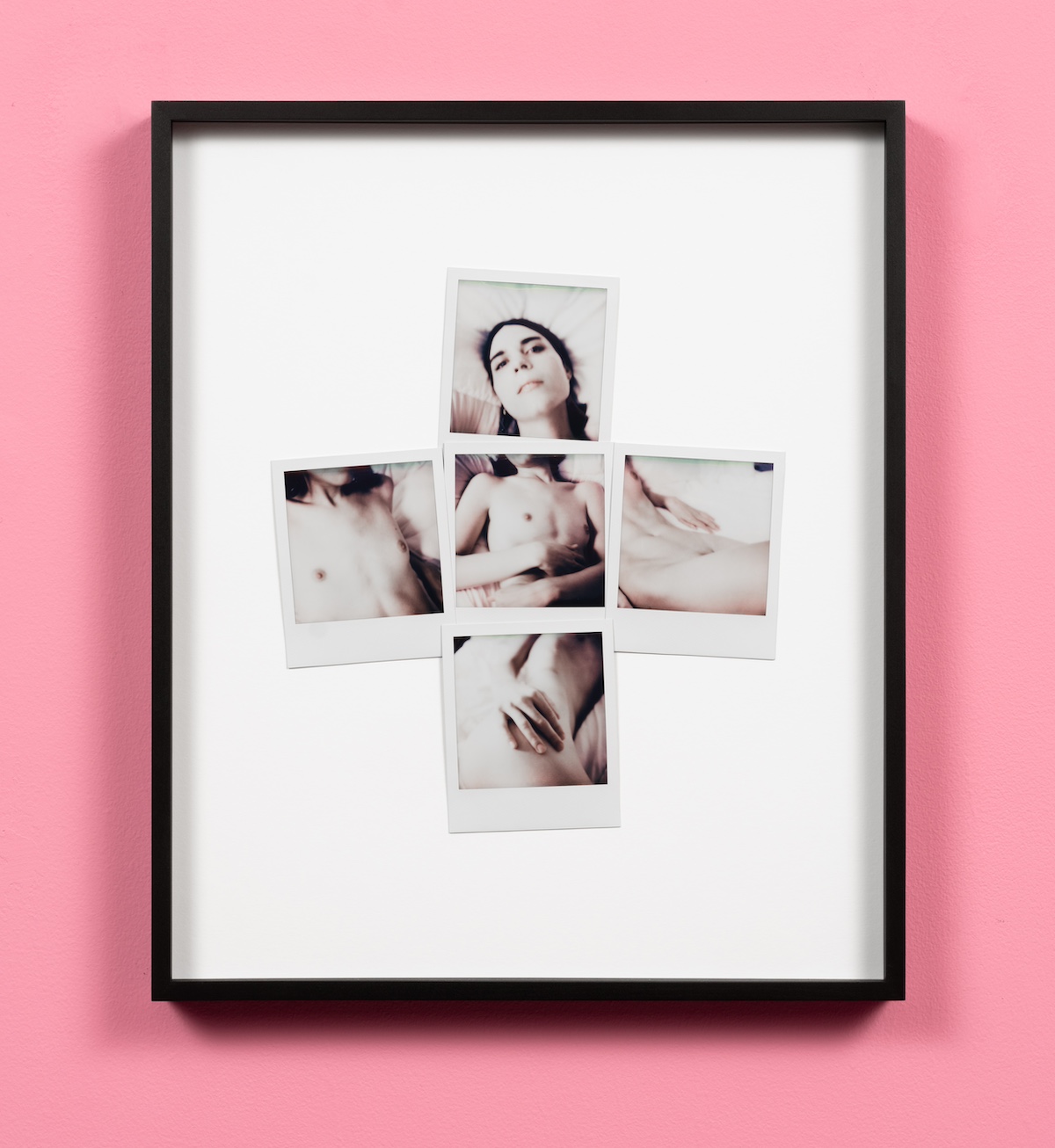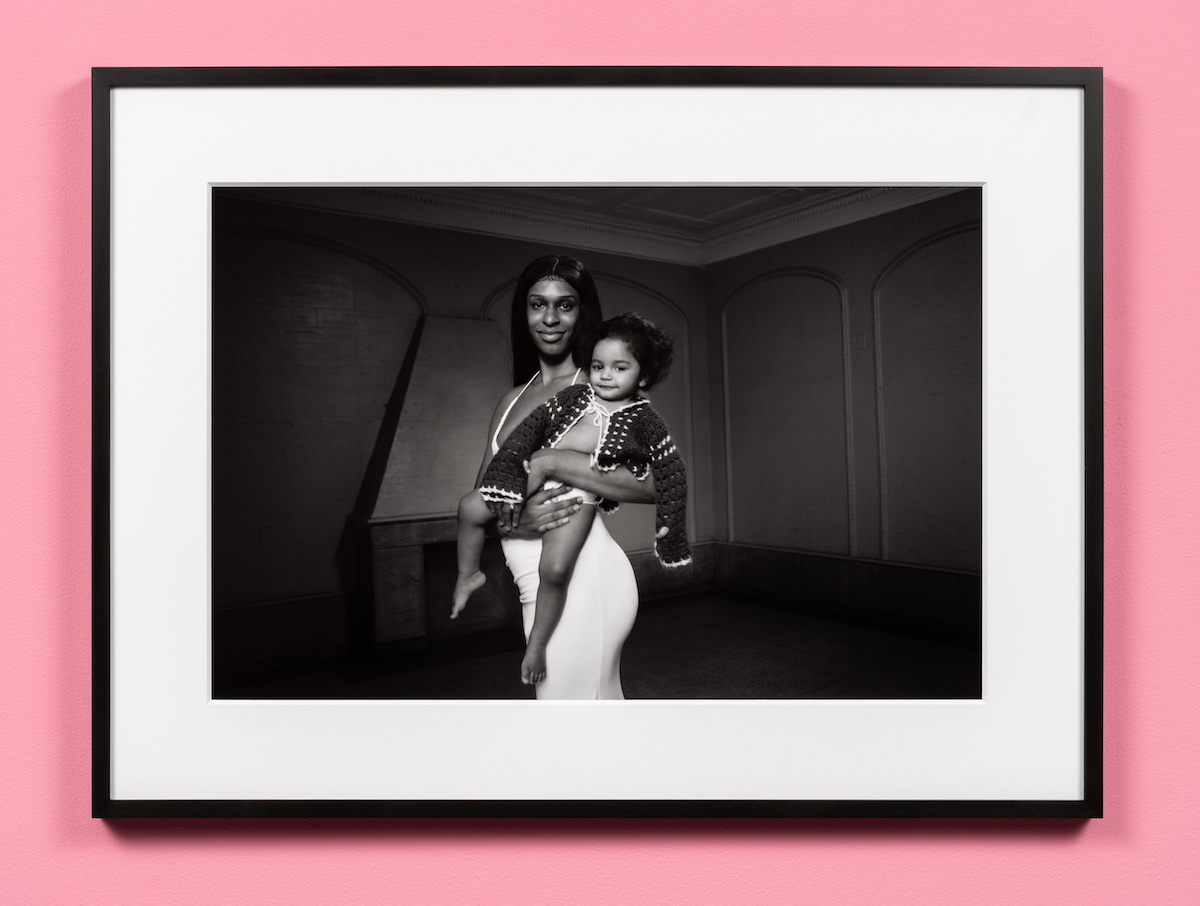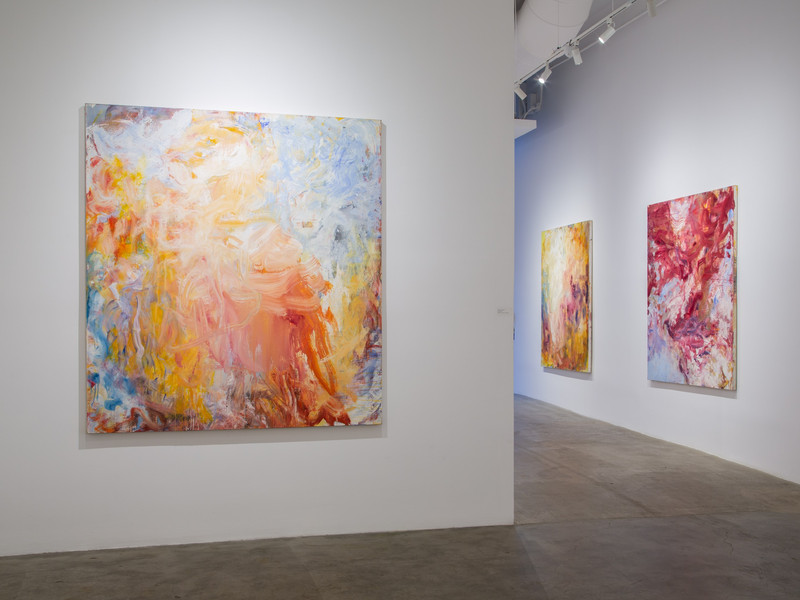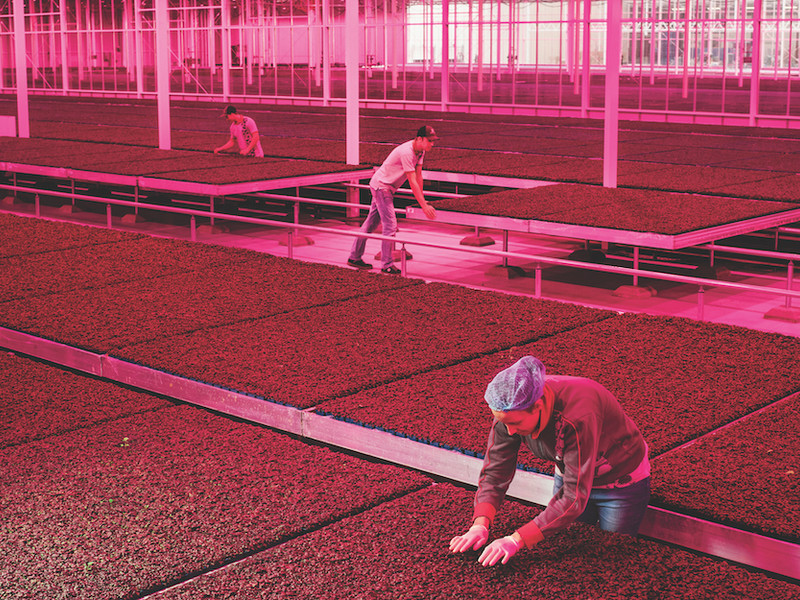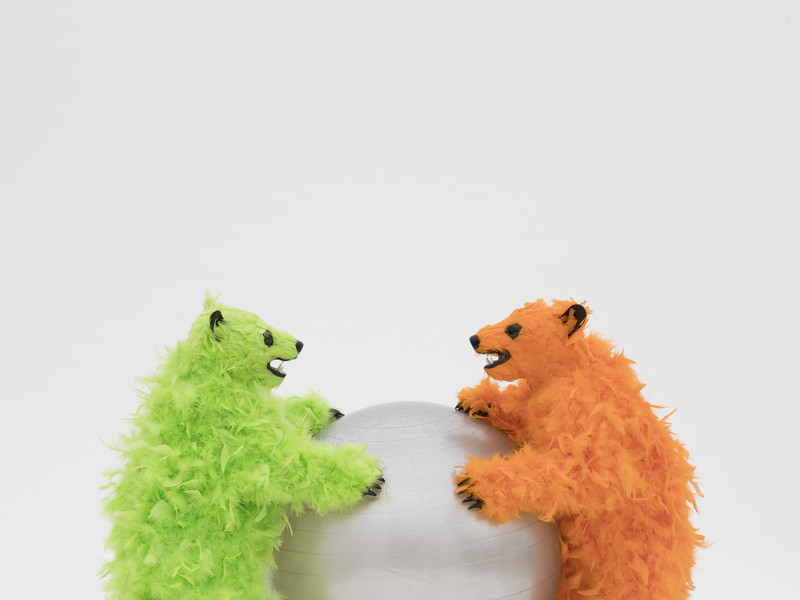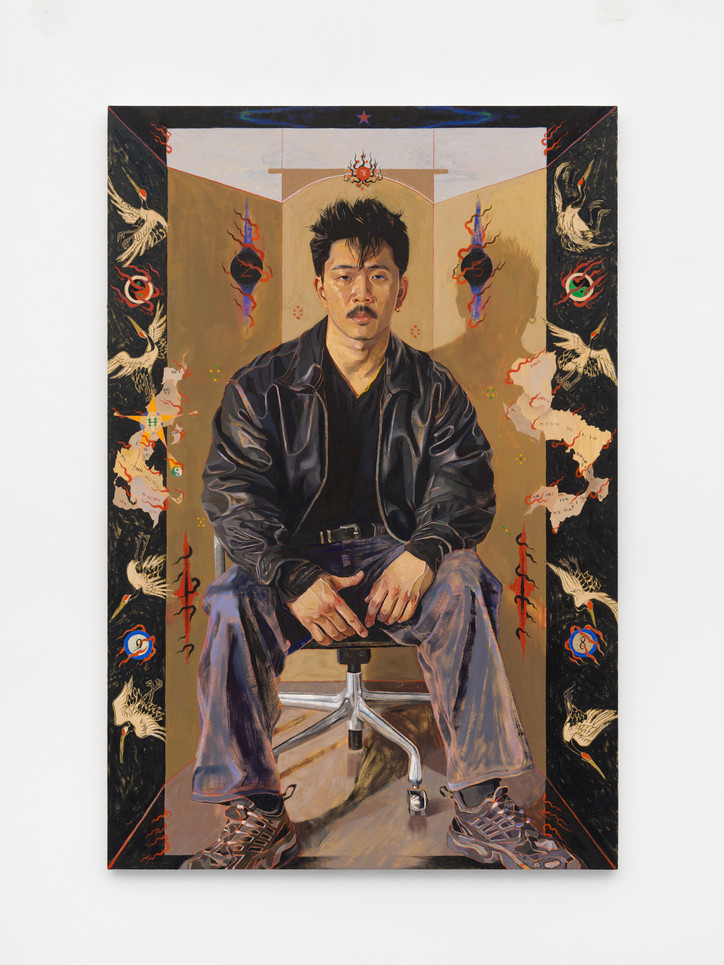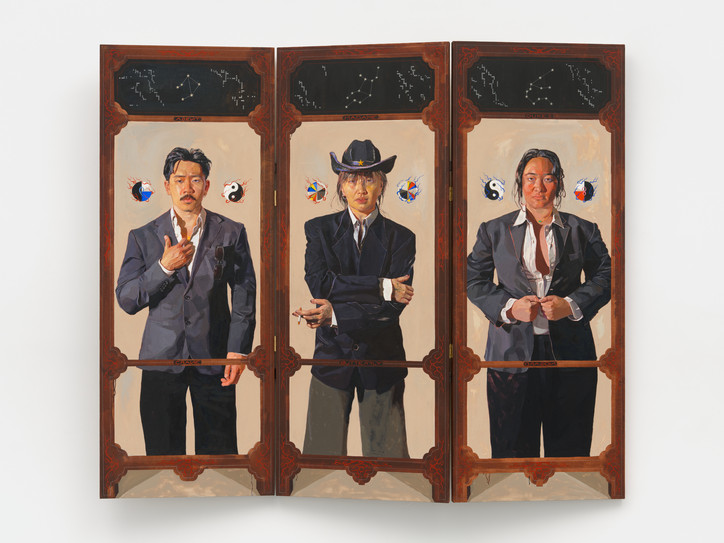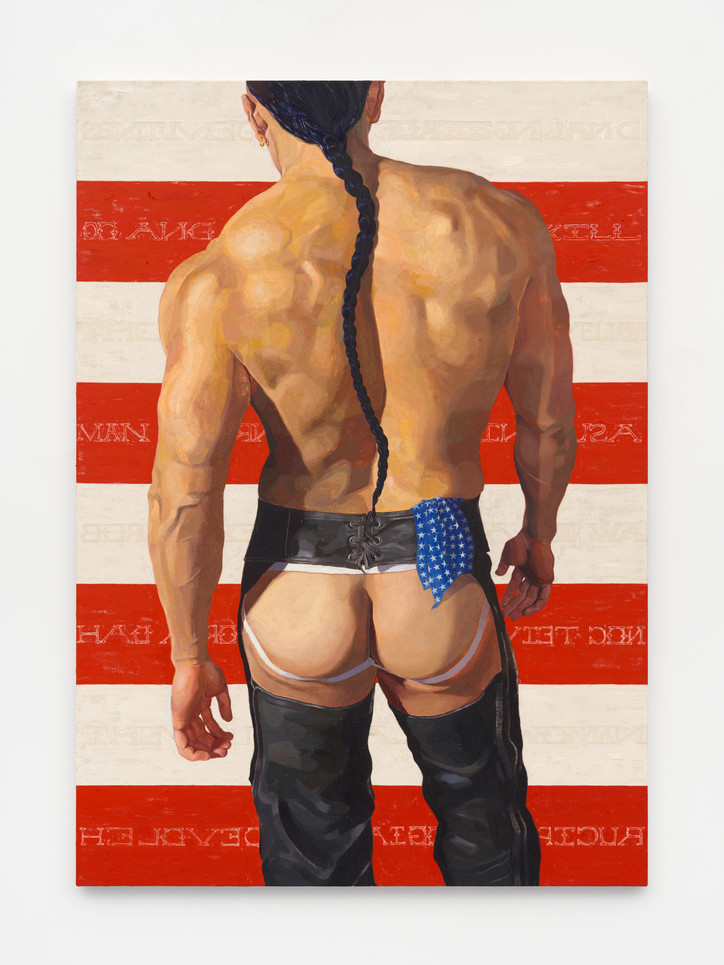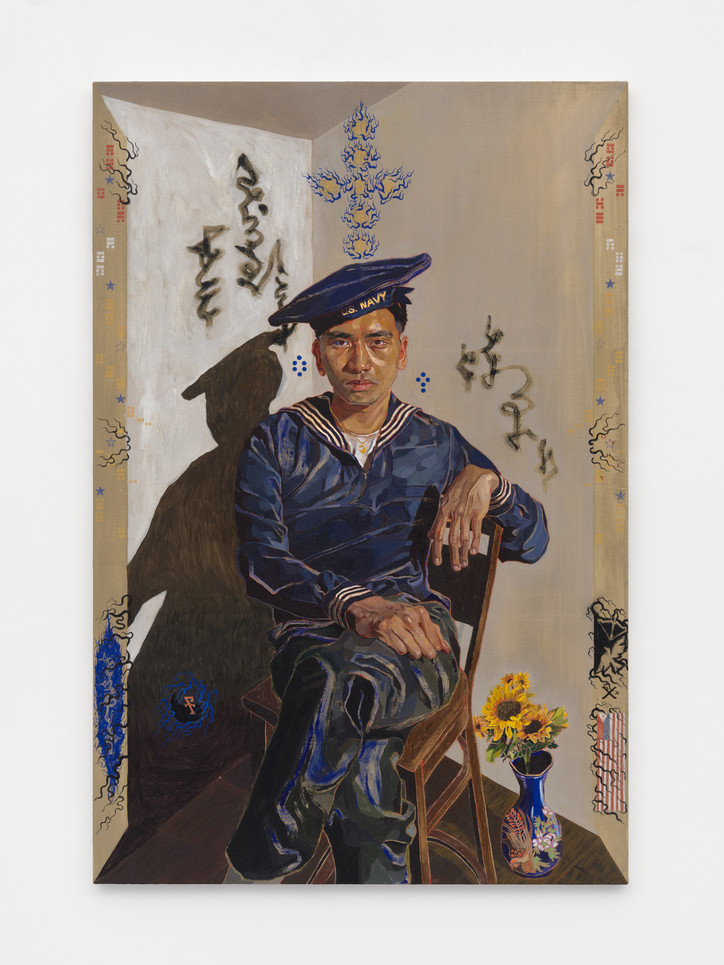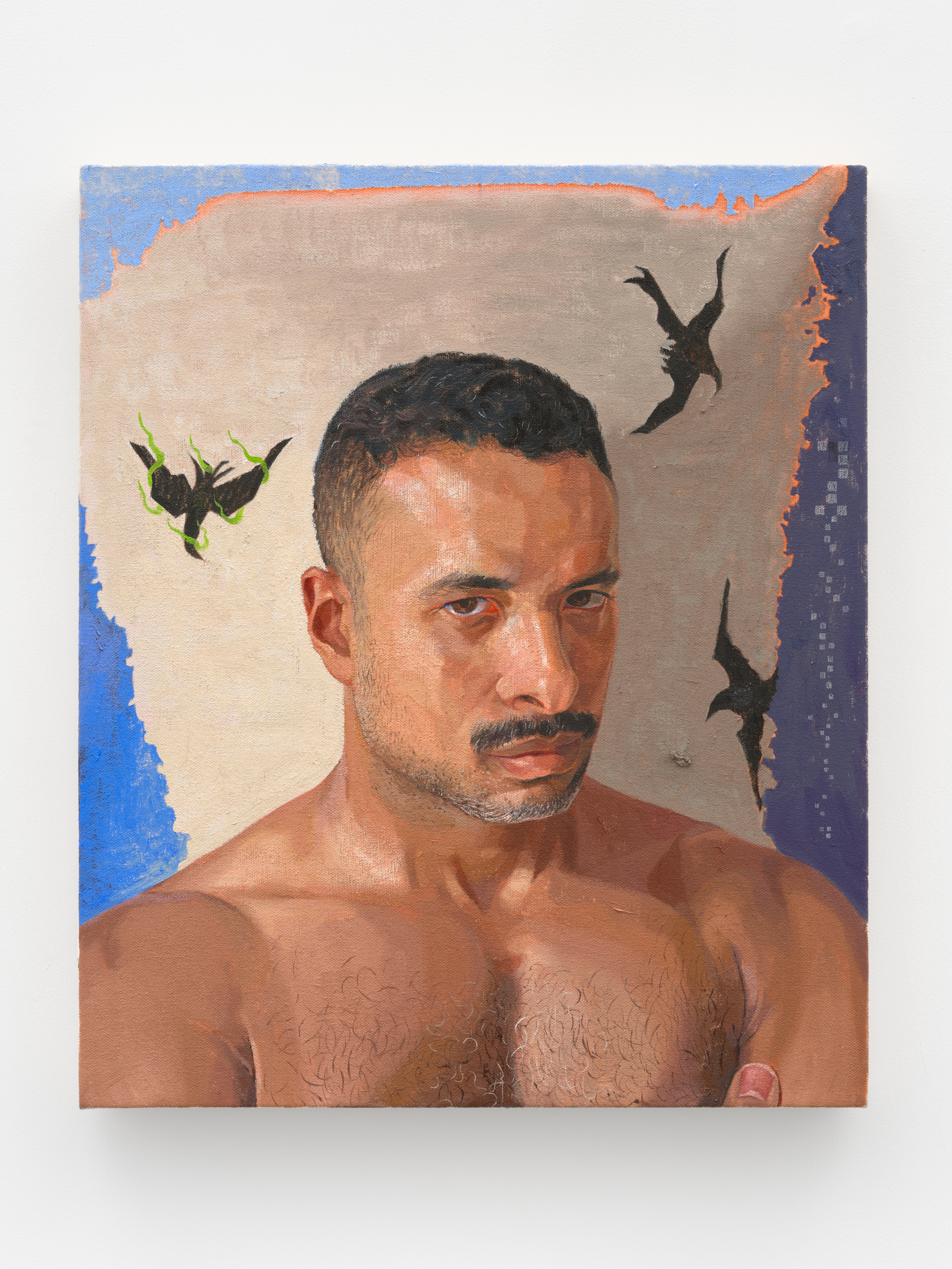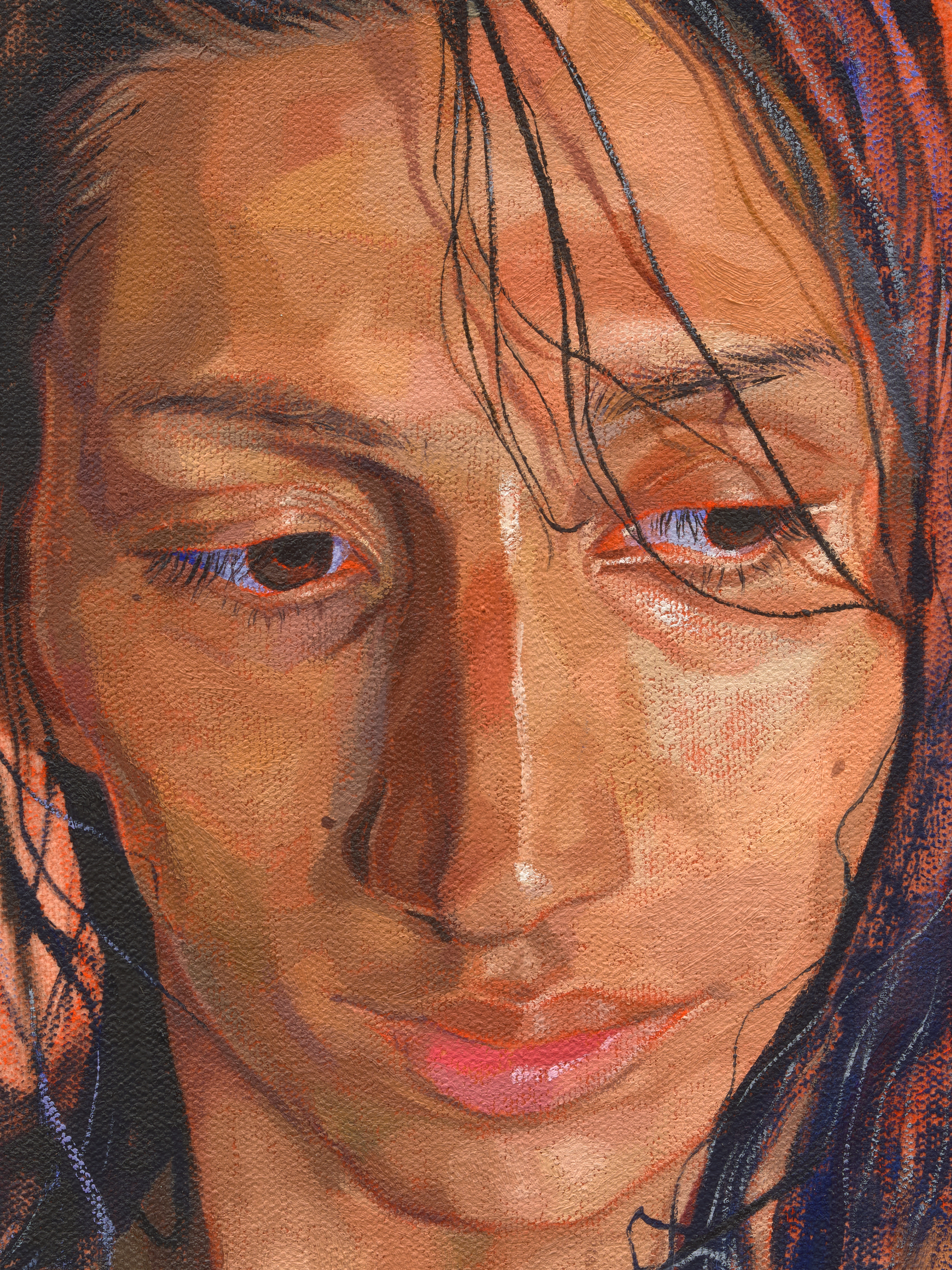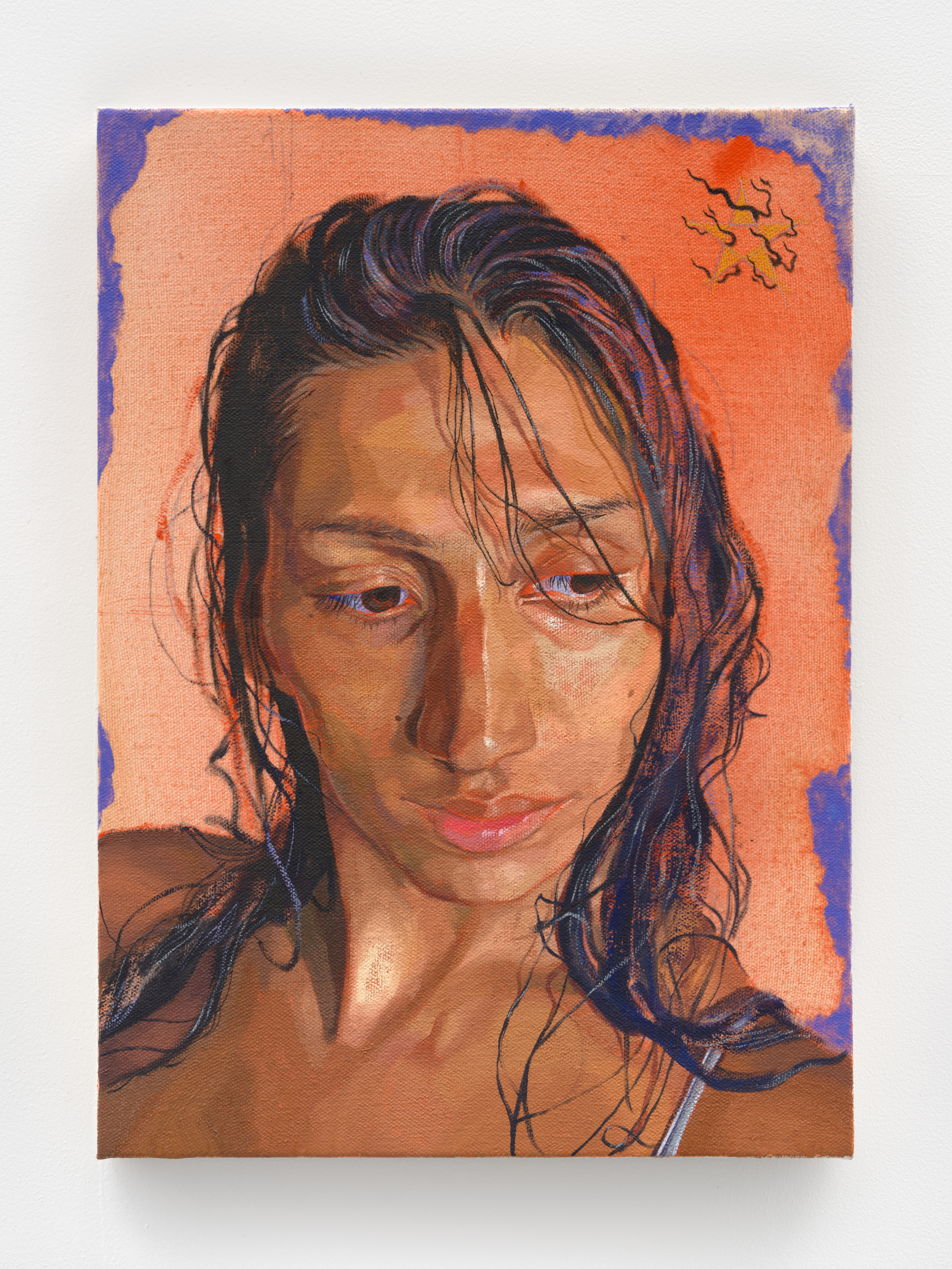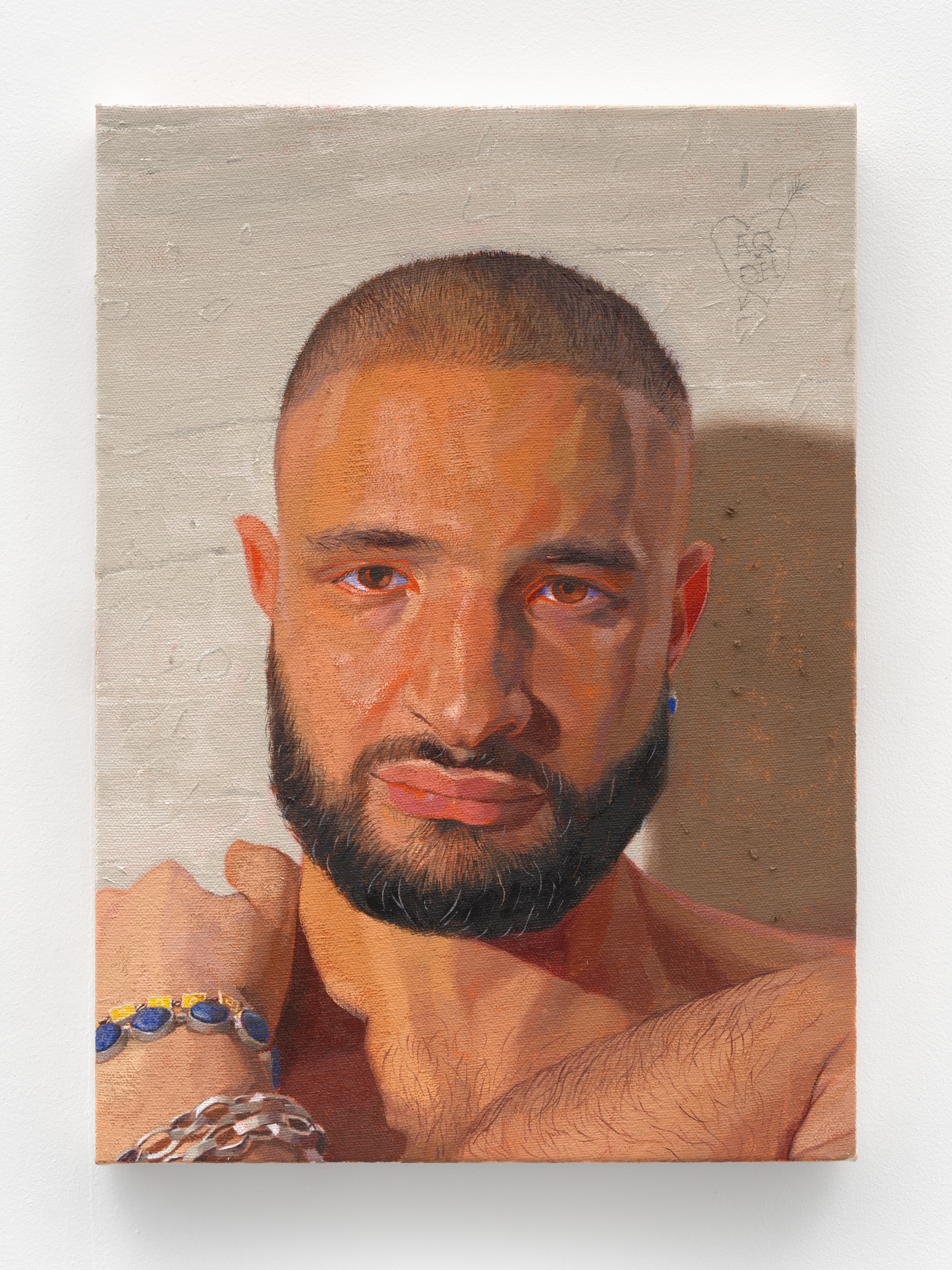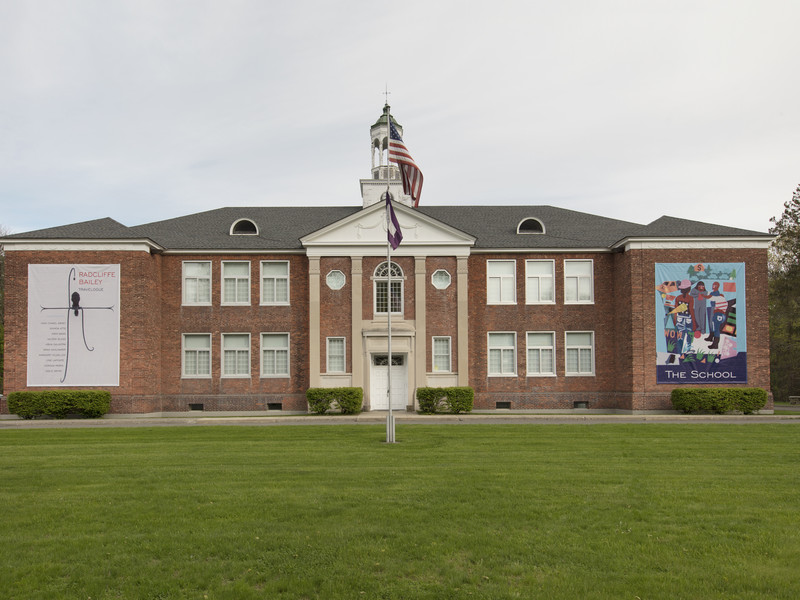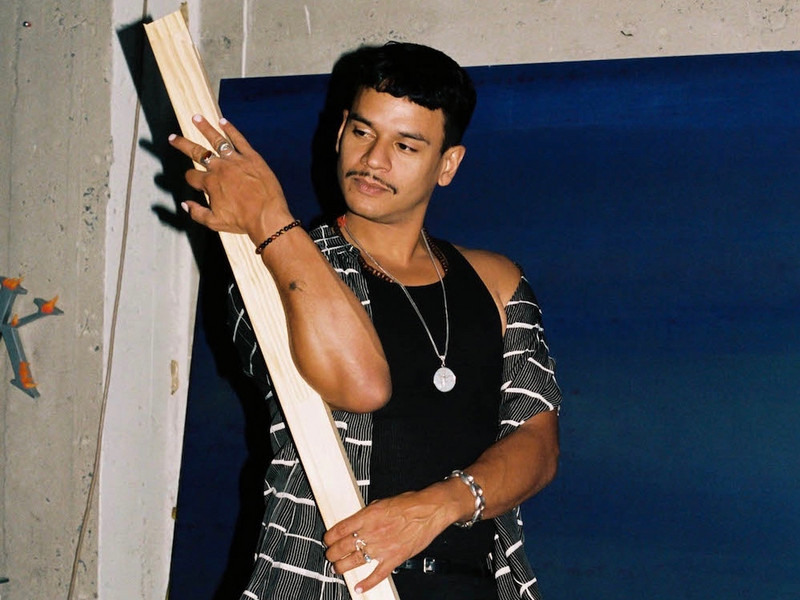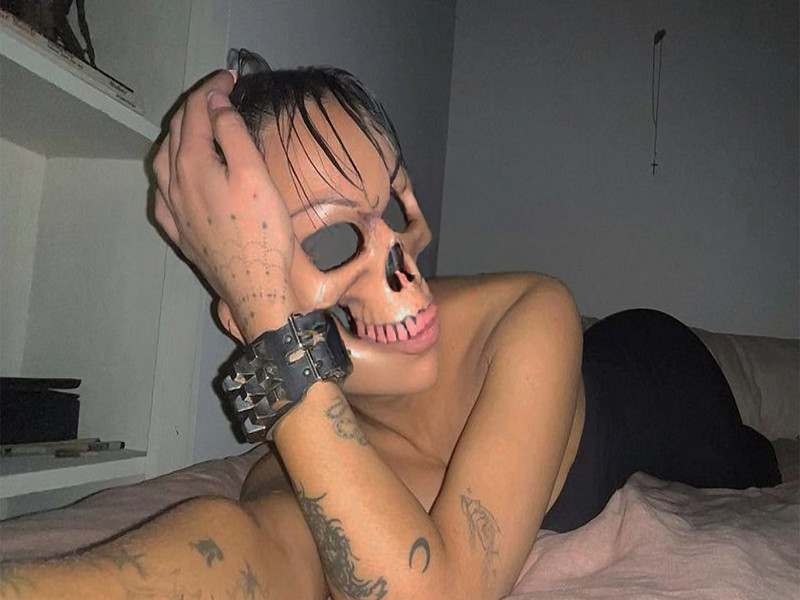Last Call for Food Groups

So this is your first show with Team?
It’s my first with Team, what a thrill. It’s a kind of rebirth.
Is it a departure from your previous work?
Yeah, I think, as people have written about, I’ve always been attracted to the quotidian object, the hyper-everyday, hyper-familiar. My practice started with an interest in the found object, the pathos of the cast away thing that we all know and love. I realized early on that I’m not really a formalist, so I was working with found objects but I think my interest was always bringing to light the extraordinary qualities of these things we just take for granted. I made these tiled mattresses which I think of as exemplary of my practice early on—the mattress being vaguely anthropomorphic, the body is so implicated in the object that it almost has a life force of its own. I think that’s always been an ongoing concern, is that the objects that I’m using in my work, we almost have an instinctual relationship to them. I’ve done a number of different chairs. An early piece of mine, I carved a chair out of Styrofoam and had it floating in four wine glasses, each one of the legs was in a wine glass. I knew I was on to something when I had this Styrofoam chair in the studio, and I would see it out of the corner of my eye and my body would just want to sit down in it. So that’s important to these pieces, that you have a subconscious relationship to these things because they have made us who we are in a way. Then I moved on to clothing, which I think has a similar implication. I cast my entire wardrobe in porcelain, it was all folded clothing that hung on the wall. Again, it was about how that object has made us naked, how we’ve evolved to live with it. So I’m finding these things, and my intervention is a kind of celebration of the thing, a belief in the object and a dedication to the object. It’s never really been me trying to transform something into something else, it’s always been me trying to accentuate or amplify the potency of that thing. So with the mattresses, I thought tiles were such a clear way of showing dedication, the way they’ve been used in temples and churches over the years, it’s like Oh my God, that must have taken so long. So it was exactly that, I felt I was drenching these mattresses in labor, a sense of belief in the thing. So that’s what gave them their power, me showing the time I was spending on it.


So with the case of the chair, and the mattress, you make it almost impossible to interact with them in the way they were intended. Is there something in your transforming these objects that intentionally distances them from the viewer?
Yeah, I think there is a tension that all artworks thrive on, the attraction and the repulsion—the repulsion is like, Don’t touch this, because it’s a fine art object, or it’s fragile, or it’s meant for all time. I think it’s often a product of wanting to preserve the object. But it varies from piece to piece, with the Styrofoam chair, it’s so much about its fragility, and its lightness, and almost the unnerving quality of even imagining sitting in that thing and it being destroyed. There is a sculptural quality that has to do with that imagining, it’s almost like nails on a chalkboard, you can have that sensation just by imagining it, it’s sensorial. But my intervention is an act of preservation, and exaltation. Those early works in particular are also rooted in mummification, and the idea of wrapping the original in a shell to preserve it. I did a piece called No Answer, which was an old bell-ringer phone that I put inside a mold of a rock, and then cast a really durable plaster resin around the phone, and then had it plugged into a telephone jack. You could call the phone in the rock, there was a little business card with the number, and it would just ring and ring and ring, but nobody could pick it up. In that case I was trying to put the viewer inside the sculpture.
You’re based in LA now, did your practice begin there?
Yeah, I was born and raised in West LA. I had a Swedish au pair who would bring me to Venice Beach at nighttime to hang with her punk friends. Our first house was in Venice, and then my parents got divorced when I was ten, I was watching Growing Pains and I remember my mom telling me that they were getting a divorce, and I was like, kind of bummed that she was interrupting the show. So it was kind of a quintessential LA childhood, my parents met on a commercial shoot, and then multiple stepfathers involved. So yeah, the LA experience is evident in the work, I think there’s a sense of mysticism that goes along with LA, I think LA is the land of invented religion, that kind of place where you can turn your superstitions and religious inclinations into your own custom belief system. So there are these undercurrents of spirituality in the way I’m relating to these objects.
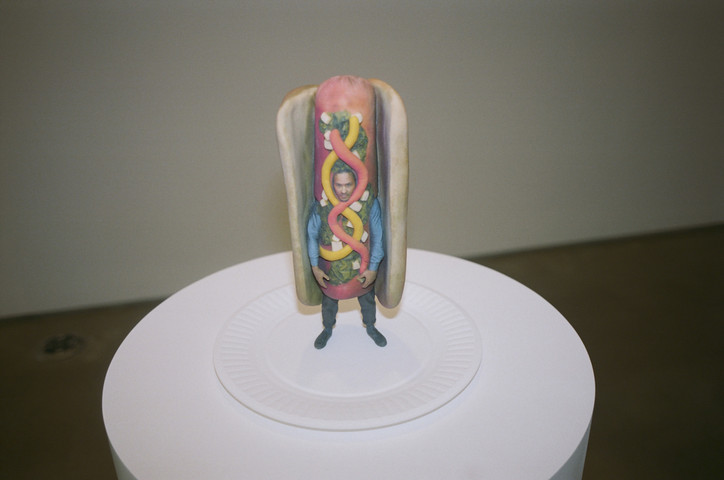
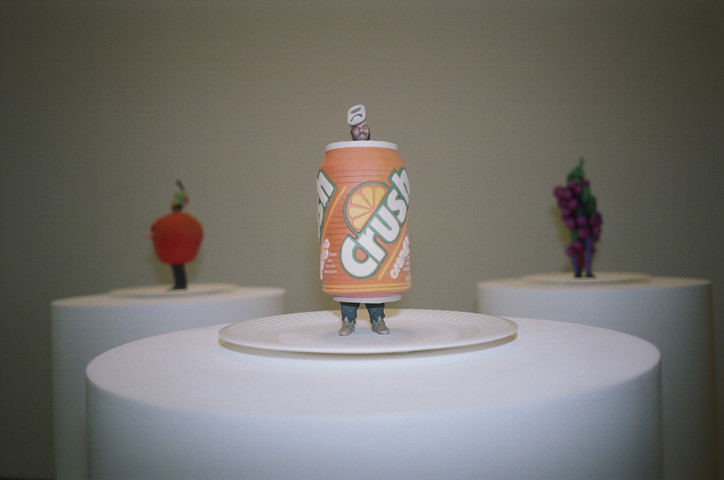
So how did everything get rolling with your career?
I was all primed to be a graphic designer for the movie industry, but my first day of college I had this sort of epiphany and changed my major to Fine Art. I eventually went to USC for grad school and graduated in 2006 with an MFA, and immediately went to Thailand for a two- or three-month residency in Bangkok, where I produced a show out there. I felt really invigorated by making work in Bangkok, where I didn’t have nearly as many tools, there was a limitation to production that was nice. A lot of the works were poetic combinations of objects, and I took a lot of that gusto and put it into a show at the Black Dragon Society in 2007, it was my first real show since graduating. There was a mattress in that show, there was a fallen Christmas tree that had been left on the side of the road for many months— I think my show was in March, so it had really been hanging around for a long time—thinking about the body of Christ, and the tree kind of being the body of Christ, it was a mummified Christmas tree. I think in that show were born some of these ideas of objects and their relationship to labor, and the investment of labor into objects as an important quality of an artwork. Then that show got me into the Whitney Biennial, and another show in New York. It’s kind of been going ever since then. Each artwork and each show I’ve done over the years had led me onto the next thing. When I was in Joshua tree—it was a very common realization, but I’d be climbing stones and seeing how I’d get to the next stone, but the move beyond that looked impossible at first, until I got onto the next stone. So the journey is a bit of a self-guided thing. And so yeah, this work is a departure in the production, these are all digitally printed pieces, but they’re still rooted in these very familiar things, we know what they feel like, we know what they taste like, we see ourselves in them all the time. So that, to me, is the throughline.
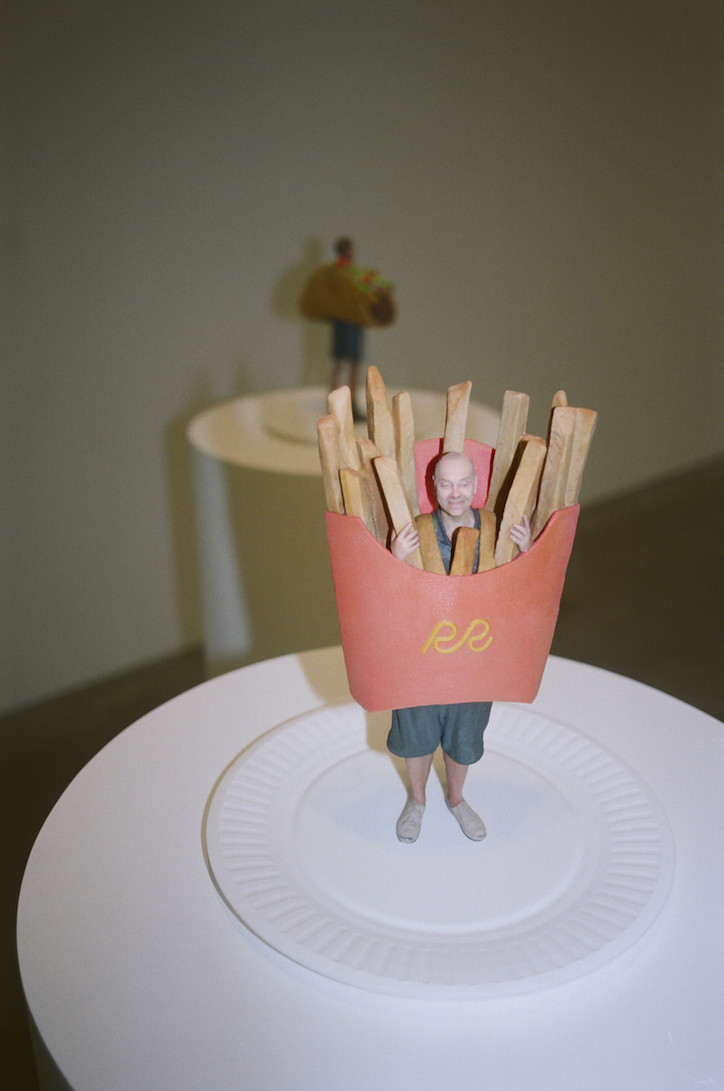
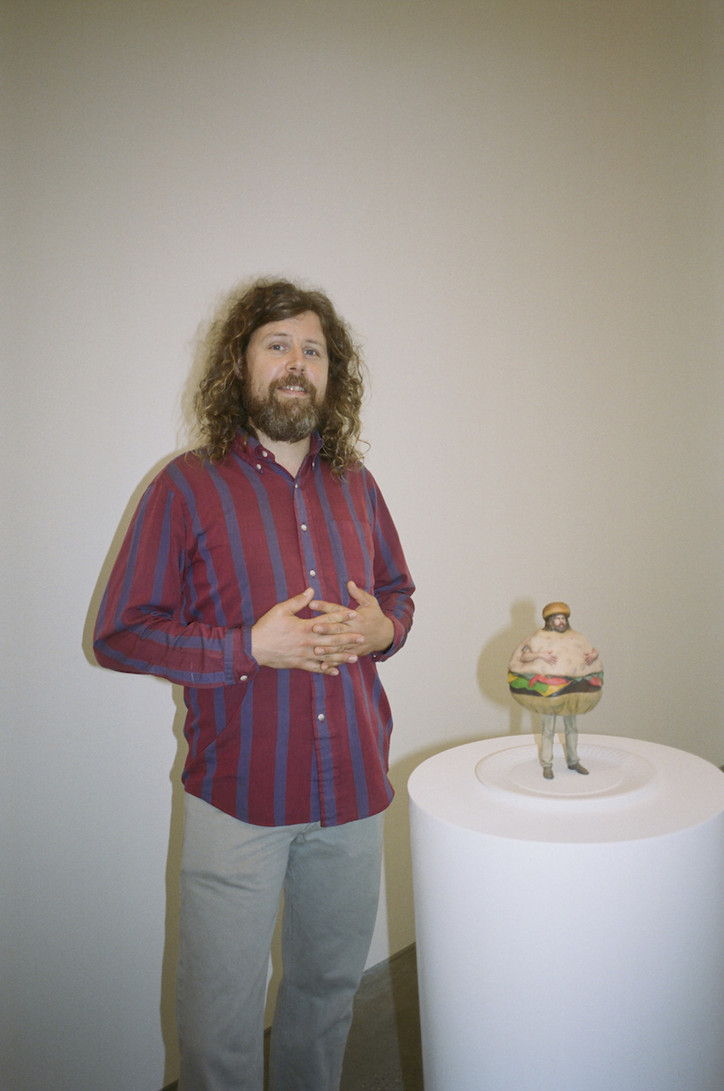
What was the immediate inspiration for this show—or, to continue your metaphor, what was the stone before this one?
There’s a few things. I’ve been attracted to that problem where you’re watching an old war movie of boats on the sea getting blown up, and it’s all model boats, so they put all this energy into detailing the boats so they look real, but guess what, you can’t control how water particle-izes, or the flames don’t look at all like what a huge fire would look like. So that’s a prime consideration of sculpture, is scale. I felt this dilemma of making small things appear big, and how there’s this problem of physics, that was always something I was interested in over the years. And again, as a sculptor, we are often so invested in the means of production, so I think the advent of scanning and digital printing is something that you can look out your window and see growing on your lawn, from day to day things are developing. Two years ago, maybe you couldn’t afford it, but this year there’s a printer next door. But I was really interested in what would happen if you take something huge and make it small again, and the weirdness of recognizing that the thing was once big, but seeing that it’s been returned to its natural size. Last year I was working on this project where I had the idea to make this giant T-shirt, like sixteen feet tall, and then have that T-shirt scanned and printed, or milled, so that it was T-shirt size again. So you know, the heaviness of that fabric draping in that way, it’s going to look totally off. But it’s such a big thing to scan that it’s beyond the limits of what the technology can do. So I realized, these scanners love things human sized, they do that great, but these printers, they all want to print things burger sized. So I had this idea, I’m going to rent a bunch of food costumes from the Hollywood costume houses, go over to Doob, this place that does miniatures, and they’ll scan it and I’ll figure out how small to make the strawberry, or how large to make the apple, I’ll just order the size and voila! It was kind of a classic, efficient use of readymades to produce these sculptures, just by spending some money and some ingenuity.
Team Gallery is located at 83 Grand Street in Manhattan.
